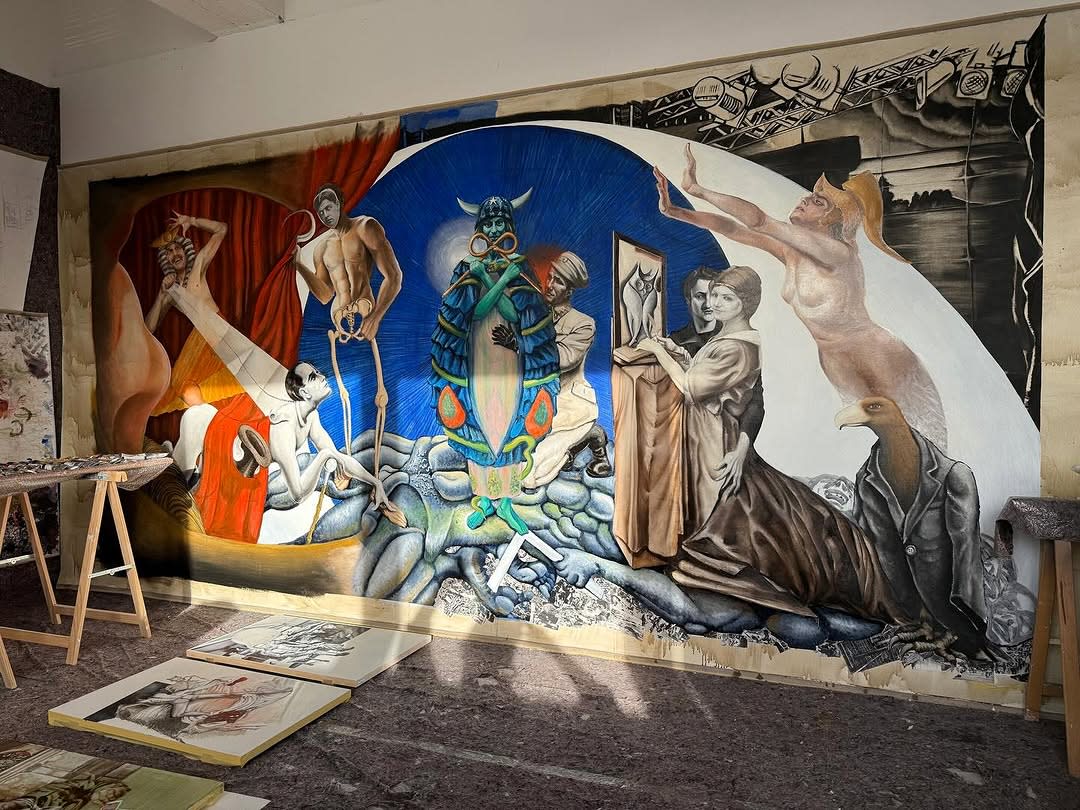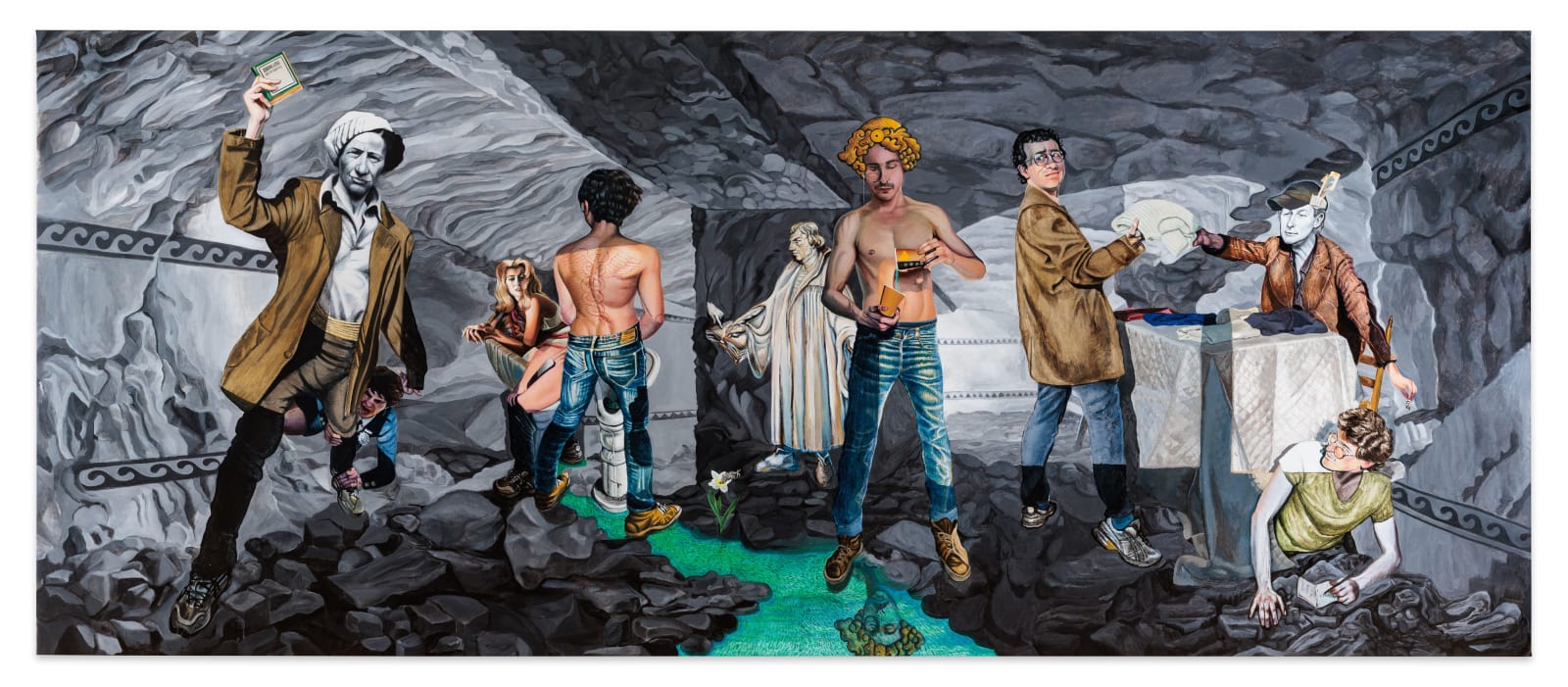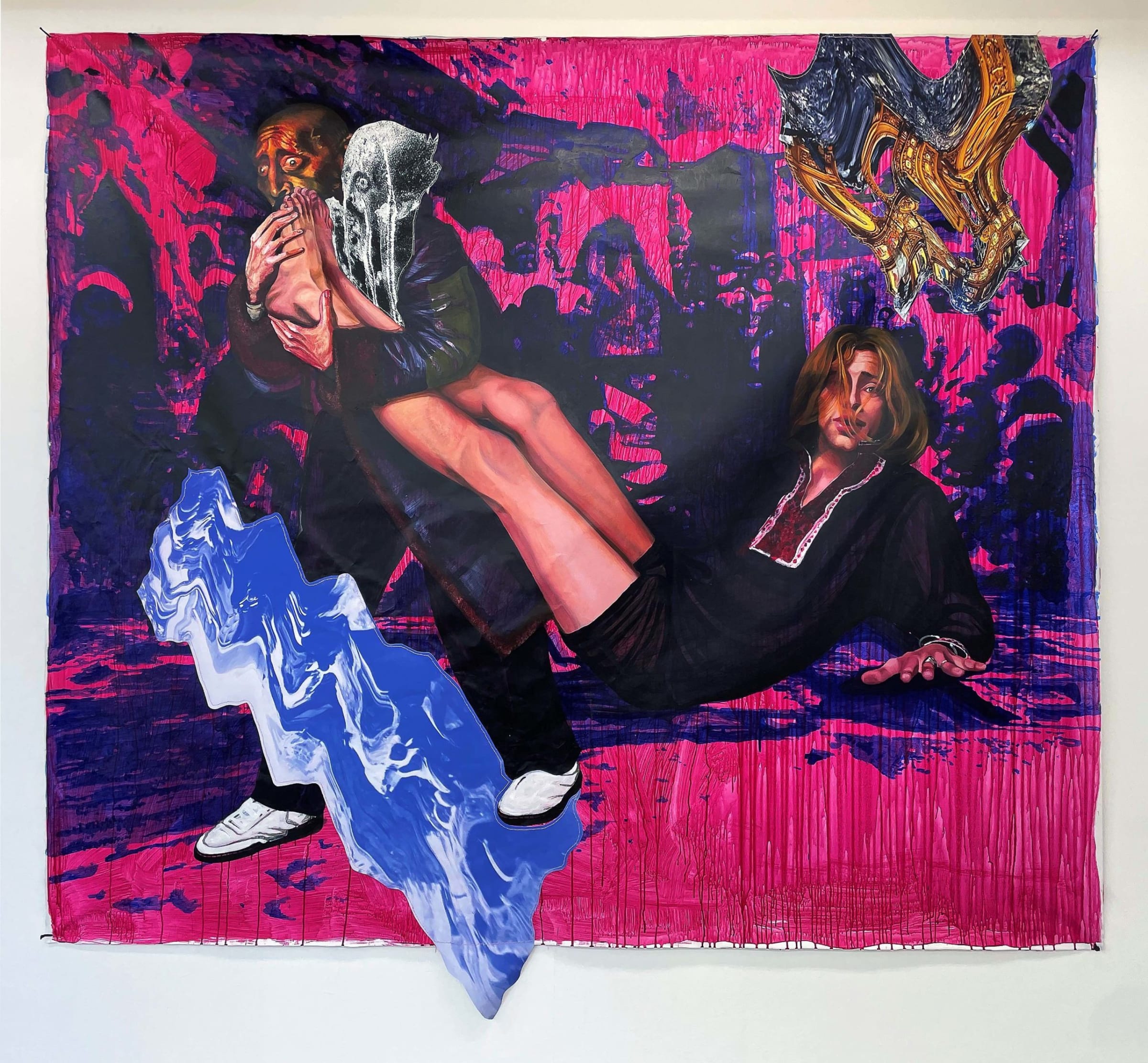Mikołaj Sobczak
-
Biography
Born 1989 in Poznań, Poland
Lives and works in Düsseldorf, Germany
Mikołaj Sobczak works in the fields of video and painting; collaborative performative forms of expression are also an essential element of his artistic practice. Sobczak's work depicts everyday scenes as well as alternative historical images; in his surreal, collaged pictorial narratives he inserts protagonists from queer and transgender activism and countercultural emancipatory movements.Sobczak studied at the Academy of Fine Arts in Warsaw in Miroslaw Balka's Studio for Spatial Activities, was a scholarship holder at the Berlin University of the Arts, and graduated as a Masters student in 2019 at the Kunstakademie Münster.Mikołaj Sobczak’s recent exhibitions include Salzburger Kunstverein; Kunstmuseum Moritzburg, Halle; Jester - Flanders Arts Institute, Genk, Belgium; Ludwig Forum, Aachen; Kunsthalle Münster; Haus der Kulturen der Welt, Berlin; MUDAM, Luxembourg and Museum of Modern Art, Warsaw.
Sobczak’s works are held in the collections of Los Angeles County Museum of Art (LACMA); Moderna Museet, Stockholm; Kunstsammlung Nordrhein-West- falen, Düsseldorf; Ludwig Forum, Aachen; The Perimeter, London; Museum of Modern Art, Warsaw and The National Museum, Gdańsk, among others.
In 2021, Sobczak was awarded Poland’s most prestigious art prize, the Paszport Polityk. He was an artist-in- residence at the Rijksakadmie van beeldende kunsten in Amsterdam and took part in the biannual residency program with Art Explora - Cité internationale des arts in Paris. As one of four selected artists, he was recently awarded the prestigious Villa Romana Prize for the year 2026.
-
-

-

-

-

-
In times of political radicalization, Sobczak's art invites us to engage with the construction of history.
– Merle Radtke, Kunsthalle Münster
-
-
News
-
Works
Mikołaj Sobczak
MERCURY (UNDERGROUND), 2025Acrylic on canvasSigned and dated verso200 x 477 cm
78.7 x 187.8 inchesB-MSOBCZAK-.25-0003In 'MERCURY (UNDERGROUND)', Sobczak stages a choreography of protagonists—queer activists, exiles, revolutionaries, and outlaws—whose intertwined lives reveal the ruptures of history and the unfinished work of resistance. On the left,...In "MERCURY (UNDERGROUND)", Sobczak stages a choreography of protagonists—queer activists, exiles, revolutionaries, and outlaws—whose intertwined lives reveal the ruptures of history and the unfinished work of resistance.
On the left, Eva Kotchever (also known as Eve Adams), a Jewish-Polish immigrant and early queer activist, holds her book “Lesbian Love”—the first known lesbian fiction novel, self-published 100 years ago. She is pulled back by undercover officer Margaret Leonard, whose arrest led to Eva’s deportation from the U.S. and later death in Auschwitz.
In the center stands a figure inspired by the “Temperance” Tarot card, symbolizing balance with one foot on land and one in water.
Actress Catherine Deneuve in “Belle de Jour” appears nearby by a urinal station, showing the way fascism labels women as either pure or perverse. Klaus Theweleit describes it in his book “Male Fantasies”. He also explains how fascism replaced fear of the body liquids with control and violence.
On the right is Stanisław Chmielewski, who—with a group on his friends and non heteronormative individuals—saved Jewish lives in WWII by hiding people and providing fake identity papers. His clothing stall was a secret place for passing documents and planning actions. These moments from underground history are placed in modern settings to show that such dangers are not gone. Philosopher Adorno wrote that under the surface of European history is a hidden layer that becomes visible in fascist times. The ghost of Martin Luther, as Thomas Mann said, still haunts us as a symbol of obedience to power.Exhibitions
Mikołaj Sobczak, Moon, Sun, Mercury, Salzburger Kunstverein, 2025ExhibitionsExternal ExhibitionsPressVideoRequest more information




















